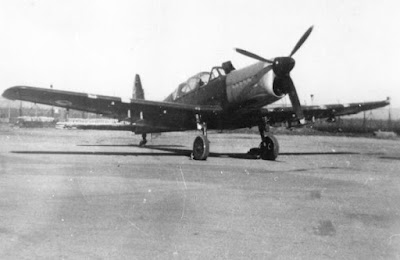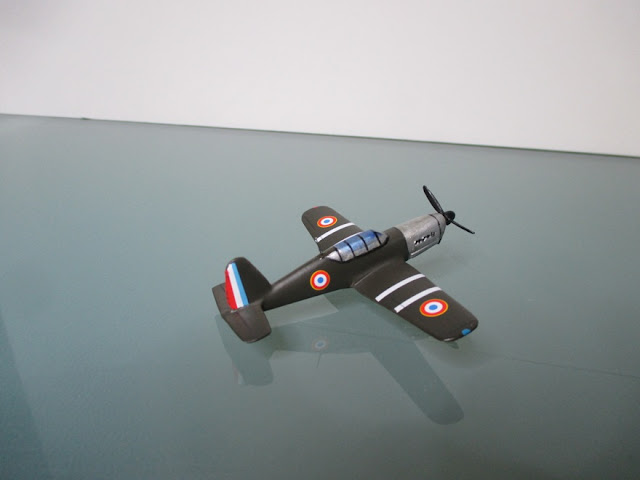M. Chaubet m'a rendu visite et m'a porté quelques unes de ses nouveautés, dont un avion dont je n'avais jamais entendu parler auparavant, le SIPA (Société Industrielle Pour l'Aéronautique) S.12.
Cet avion a pour origine l'avion d'entrainement Arado 396, lui-même dérivé de l'Arado 96, que l'Allemagne a fait produire par la France courant 1944 lors de l'occupation.
Dès la Libération, la Société SIPA, qui n'avait produit aucun avion pour l'Allemagne, a repris le concept en le produisant sous le nom de S.10, commandé par l'Armée de l'Air comme avion d'entrainement.
Après une première évolution, le S.11, la Société SIPA a développé une troisième version, optimisée pour l’entraînement au tir air-sol, et comme ses prédécesseurs, les S.12 ont participé aux combats pendant la Guerre d'Algérie avant d'être remplacés par les North American T-6.
Mr. Chaubet visited me and brought me some of his new products, including an airplane that I had never heard of before, the SIPA (Société Industrielle Pour l'Aéronautique) S.12.
This aircraft originated from the Arado 396 training aircraft, itself derived from the Arado 96, which Germany had France produce in 1944 during the occupation.
As soon as the Liberation, the SIPA Company, which had not produced any aircraft for Germany, took up the concept by producing it under the name S.10, ordered by the Air Force as a training aircraft.
After a first evolution, the S.11, the SIPA Company developed a third version, optimized for air-to-ground shooting training, and like its predecessors, the S.12 participated in combat during the Algerian War before being replaced by the North American T-6.
The S.12 (all-metal versions compared to the S.10 and 11) were assigned to the Groupes d'Aviation Légère d'Appui (GALA or Light Support Aviation Groups) in North Africa before being repatriated to France at the end of the war for resume training activities within the Air Force, then in civilian flying clubs.








Aucun commentaire:
Enregistrer un commentaire